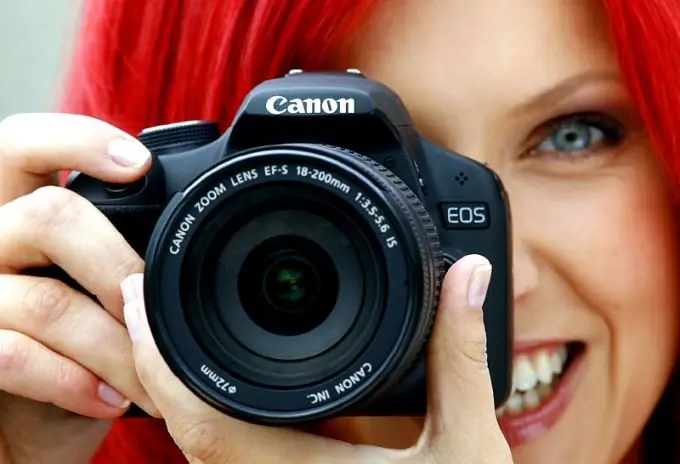When a camera appears in the house, many immediately decide to try it out. The very first shot (test shooting) is most often a view from a window or some kind of interior item. Then for several days they take pictures of friends and relatives, and sometimes just people or animals that are seen on the street. The desire to take up photography at a higher level comes later.

How to learn to take pictures
To learn how to photograph, it is important to understand the three main aspects of photography - what is shutter speed, aperture, and composition. Shutter speed is the time at which the shutter of the camera opens. In digital photography, it is enough to influence the matrix. In analog - during this time, such a luminous flux enters the film, which can illuminate the necessary areas of the future image, acting in a certain way on the silver halides.
The second aspect that is important if you want to learn how to take pictures correctly is the aperture. This is the size of the relative aperture through which the lens blades open. The larger the aperture (while the lower the numerical value corresponding to it), the shallower the depth of field of the photograph, and vice versa. In other words, pictures with a blurred background are obtained when shooting with a large aperture (the lens values are set to 1, 8, or 2), and photographs in which both the foreground and background are equally sharp are obtained with a small aperture (it corresponds to values approximately equal to 16 and 22).
The third, but not the least, place in teaching photography belongs to the concept of composition. There are many definitions of it in the textbooks. In your own words, the composition is a well-arranged arrangement of objects and color spots in the image, pleasing to the eye and perceived as optimal.
This is, in short. To really learn how to photograph, you need to study specialized textbooks or magazines dedicated to photography. From them you can learn more about shutter speed, aperture, other important components of the camera and lens, as well as delve into concepts such as "composition", "linear and tonal perspective", "frame drama."
How to take a good photo
To take a good photo, you need to have not only a camera, but also a fair amount of luck. And to him - keen intuition, quick reaction, artistic taste. Actually, all this distinguishes professional from amateur photography.
If you are lucky enough to capture an interesting shot, it is important to process it correctly. For analog photography, the processing will consist of developing negative or reversible (slides) film and printing the photographs in a special darkroom. Unfortunately, the days when pictures were printed at home are irrevocably a thing of the past. Now such laboratories are organized only by very enthusiastic experimental photographers.
You can make a good digital photo if you correctly process a good shot in one of the graphic editors. Most often, Photoshop is used for these purposes. It provides the ability to change brightness, saturation, contrast, and many other parameters that are important for a good photo. The program also allows you to use one or more filters that can change your picture beyond recognition, sometimes ruining, and sometimes turning it into a real masterpiece.
How to film people
Raising the question of how to photograph correctly, one cannot ignore the specifics of photographing people. Portraits are genre and staged. The first is an element of reportage photography, that is, people are filmed in natural conditions. For the second, the entourage is being prepared - a pavilion, light, scenery and costumes if necessary.
The light in the pavilion is exposed in a circle (in extreme cases - in a semicircle). Behind - back, it visually detaches the model from the background. In the opposite direction, the background light is directed to help avoid background shadows. To the left and to the right of the subject of photography, lamps with modeling light are usually placed. Faint fill light from above. When arranging lighting devices in such or a similar sequence, it makes sense to provide for special umbrellas or splitter screens. When talking about how to take pictures correctly, not mentioning them would be a serious omission.
Another type of equipment required in order to shoot people in the pavilion is a roller with backgrounds. Rarely is a photographer limited to one or two. As a rule, he has at least ten of them, and they can be changed depending on the artistic decisions.






